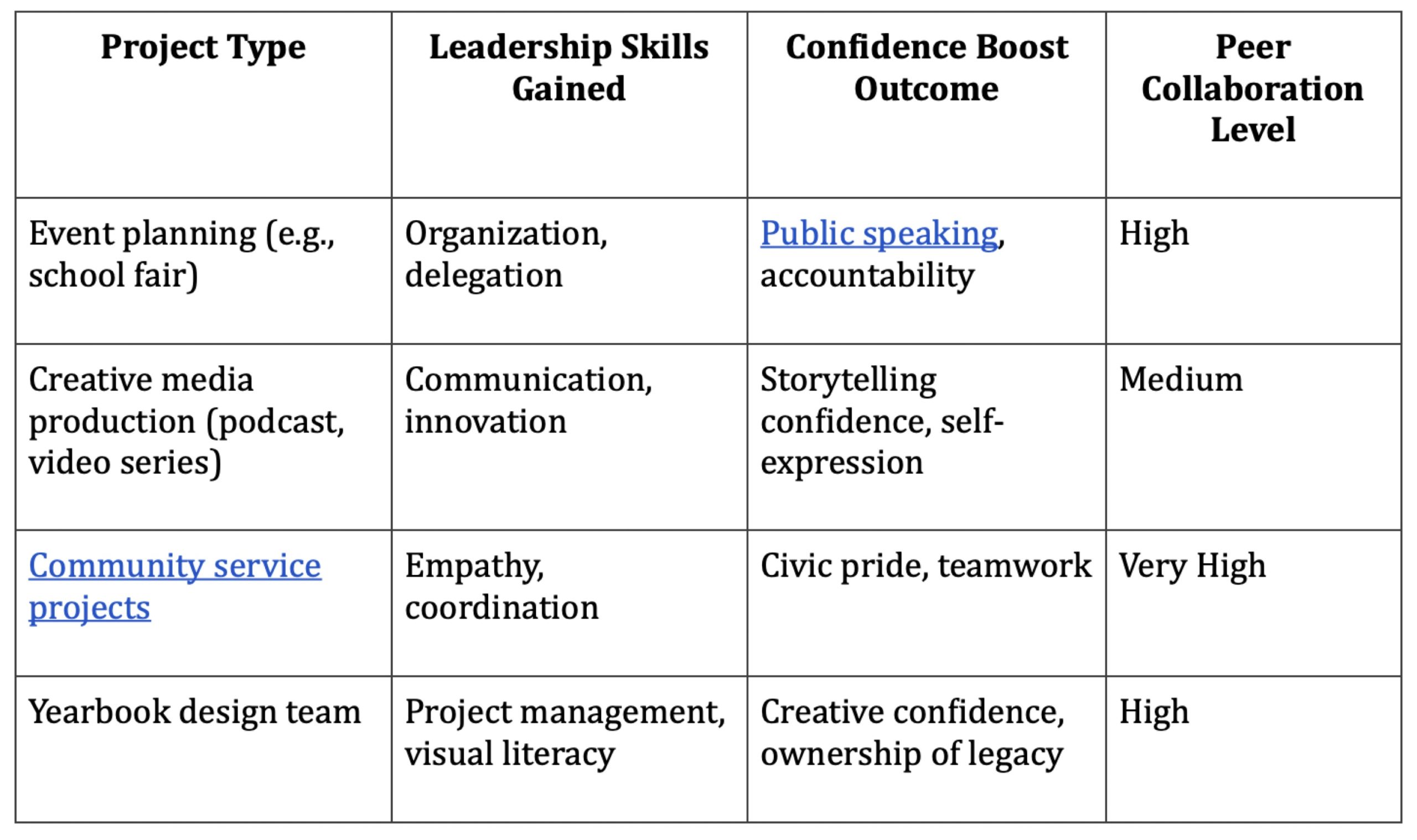
The Power of Student Ownership: Why Letting Students Lead School Projects Sparks Growth by Emily Graham
When students take charge of their learning through real projects, something profound happens: engagement skyrockets. Whether they’re planning a community event, creating media content, or designing a campaign, giving students ownership turns school into a launchpad for real-world skills.
Summary
When students lead school-wide initiatives—like art showcases, environmental campaigns, or digital storytelling—they build confidence, collaboration skills, and a deep sense of pride. This ownership transforms passive learning into active leadership.
Impact of Student Ownership

The importance of public speaking in schools
7 Reasons Volunteering Is Good for Children
Why Ownership Works: The Core Drivers
Agency: Students make decisions that matter.
Relevance: Real tasks connect learning to their lives.
Visibility: Seeing results builds pride and accountability.
Mentorship: Adults become guides, not gatekeepers.
Creating a Student-Led Project Ecosystem
1. Define a shared purpose.
Frame each project around a school-wide theme—sustainability, creativity, inclusion.
2. Assign leadership roles.
Encourage rotating positions: project manager, creative director, outreach lead, etc.
3. Set checkpoints, not micromanagement.
Teachers should mentor through reflection, not control.
4. Celebrate outcomes publicly.
Use showcases, assemblies, or digital portfolios to make student work visible.
5. Reflect, iterate, and repeat.
Ask students what worked, what didn’t, and what they’d change next time.
Common Questions About Student-Led Projects
Q: What if some students are shy or unsure?
A: Pair them with confident peers in team-based roles; confidence grows through contribution.
Q: How can teachers balance guidance and independence?
A: Provide frameworks, not step-by-step instructions—like checklists and reflection templates.
Q: How do we measure success?
A: Focus on growth indicators—communication improvement, collaboration, and resilience—not just grades.
Yearbook Projects as a Platform for Student Growth
When students take charge of yearbook design, they practice collaboration, storytelling, and real production management. By working together to choose layouts, images, and stories, they build confidence in decision-making and communication. Using platforms that enable full customization and team collaboration helps them translate creative vision into reality. To support this, teachers can encourage students to explore personalized yearbook options that let them co-design their legacy in meaningful, modern ways.
Ready to Launch a Student-Led Initiative?
Defined the “why” behind the project
Established clear student roles
Set reflection milestones
Provided creative autonomy
Documented the journey for others to learn from
Product Highlight: Padlet
When students lead school-wide initiatives, they need a simple, visual space to plan and share progress. Padlet gives teams a flexible digital wall for brainstorming, tracking milestones, and celebrating wins. Whether students are organizing an event, coordinating yearbook themes, or gathering creative ideas, Padlet helps them stay aligned — visually and collaboratively.
Conclusion
Student-led projects aren’t just about learning outcomes—they’re about transformation. When schools trust students to lead, they don’t just complete assignments; they become collaborators, storytellers, and leaders ready for whatever comes next.
Emily Graham
Emily is the creator of MightyMoms.net. She believes being a mom is one of the hardest jobs around and wanted to create a support system for moms from all walks of life. On her site, she offers a wide range of info tailored for busy moms — from how to reduce stress to creative ways to spend time together as a family. You can email her at emilygraham@mightymoms.net. She lives in Arizona.





